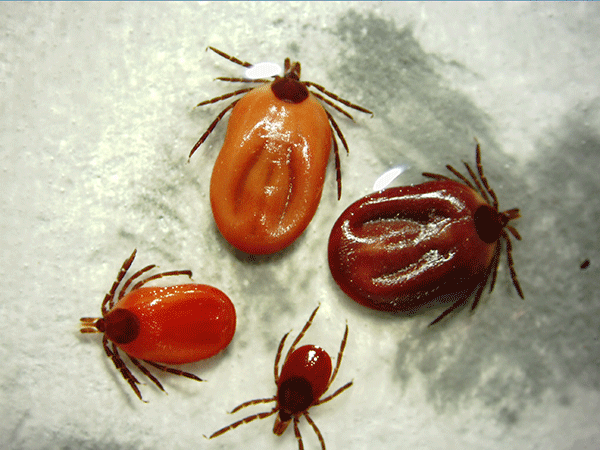Ticks aren’t just a nuisance, They carry many diseases that can have devastating effects. These spider-like insects are second only to mosquitoes in transmitting disease. Although it may be no larger than a pinpoint, a single tick can lay 3,000 eggs, and our unusually cold winter didn’t reduce their numbers.
Three species of ticks are endemic in Alabama, and they are commonly known as Deer, American Dog, and Lone Star ticks. Tick bites can cause anaplasmosis, babesiosis, ehrlichiosis, Lyme disease, rickettsiosis, Rocky Mountain spotted fever, Southern tick-associated rash illness, and tularemia. In 2013, the Alabama Department of Public Health Epidemiology Division conducted 1,137 investigations of tick-borne diseases with 290 confirmed cases. However, the actual number may be greater because not all tick-borne diseases are reportable in Alabama.
Reducing exposure to ticks is the best defense against the diseases they carry. While you should take preventive measures against ticks throughout the year, be extra vigilant in the warmer months of April through September when ticks are most active.
People most at risk from tick-borne diseases are outdoor enthusiasts, outdoor workers, pet owners and veterinarians, rural/peripheral settlement dwellers, and anyone else who ventures into tick-infested areas.
The following are some tips to avoid tick bites:
- Stay away from wooded and bushy areas with high grass and leaf litter, and walk in the center of trails.
- Tuck pants into socks to keep ticks off your legs and wear light-colored clothing to help you spot ticks.
- Use insect repellants that contain 20 percent or more DEET on exposed skin and permethrin on clothing. Permethrin should not be used directly on the skin.
- Pay special attention when applying insect repellent products to children’s skin, being sure to avoid their hands, eyes, and mouths. Repellents that contain DEET must be reapplied every few hours.
- Use available products to help prevent tick infestations on pets.
After outdoor activity:
- Inspect children, pets, clothing, and outdoor gear, such as backpacks, for ticks.
- Bathe within two hours.
- Conduct a full-body check with a mirror, including hair and scalp.
How do I remove a tick?
- Use fine-tipped tweezers to grasp the tick as close to the skin’s surface as possible.
- Pull upward with steady, even pressure.
- Do not twist or jerk the tick, because it may cause the mouth to break off and remain in
the skin. If this happens, remove the mouth with tweezers.
- If you are unable to remove the mouth easily with tweezers, leave it alone, and let the
skin heal.
- After removing the tick, thoroughly clean the bite area and your hands with rubbing
alcohol, an iodine scrub, or soap and water.
- Do not paint the tick with nail polish or petroleum jelly, or use heat to make the tick
detach from the skin. Your goal is to remove the tick as quickly as possible.
- Tumble dry clothing on a high heat setting for one hour to kill any missed ticks.
What are the symptoms of tickborne diseases?
- Many tickborne diseases have similar signs and symptoms, which include fever/chills,
aches and pains, and rash.
- Rashes may appear as circular, “bull’s eye,” skin ulcer, general rash, or non-itchy spots
depending on the disease.
- After being bitten by a tick, symptoms may develop a few days to weeks later.
- If you get a tick bite and develop symptoms, see a health care provider for treatment.
Your health care provider will want to know where you likely acquired the tick bite. Save the removed tick, place it in a plastic bag, and freeze it in case it is needed to diagnose a tick-borne disease.
How does tick-borne disease spread?
- Ticks survive by eating blood from humans and animals. When the tick finds a feeding spot, it grasps the skin and cuts into the surface, and then inserts its feeding tube.
- Many species also secrete a cement-like substance that keeps them firmly attached during the meal. The feeding tube can have barbs to keep the tick in place.
- Ticks can secrete small amounts of saliva with anesthetic properties so that the animal or person can’t feel that the tick has attached itself.
- A tick will suck the blood slowly for several days.
- If a human or an animal has a blood-borne infection, the tick will ingest the bacteria or parasites while feeding.
- At the next feeding, the tick will pass the disease to the human or animal.
Where can I find more information?
Go to cdc.gov and type Ticks in SEARCH box. If you suspect you may have a tick-borne infection, please contact your health care provider.





